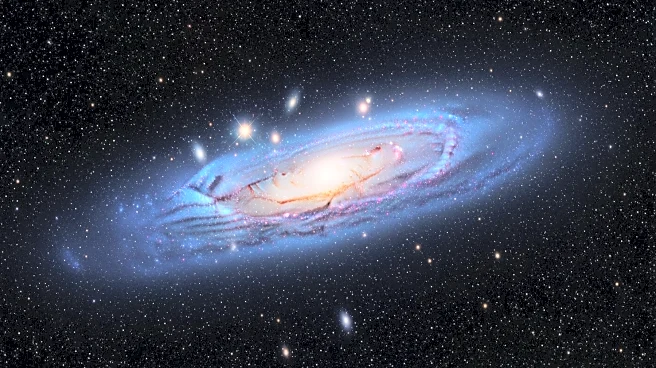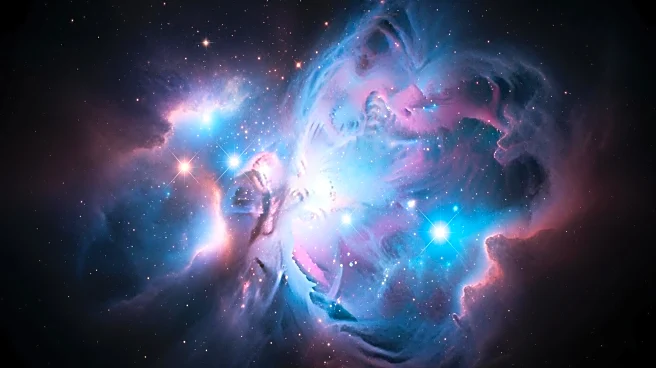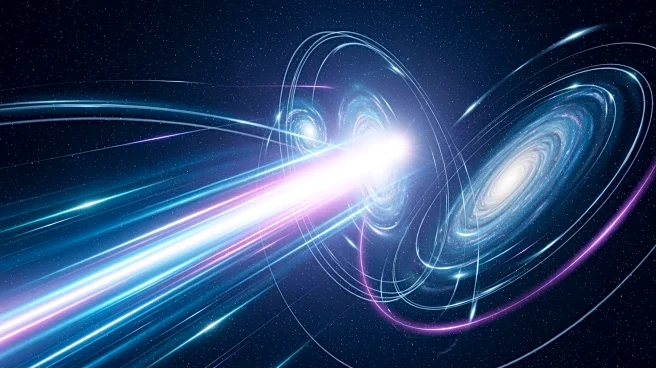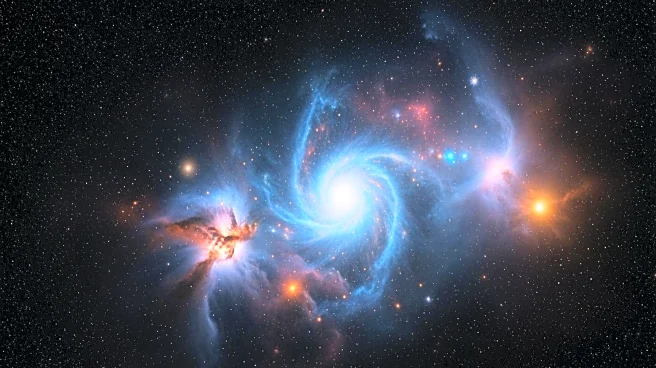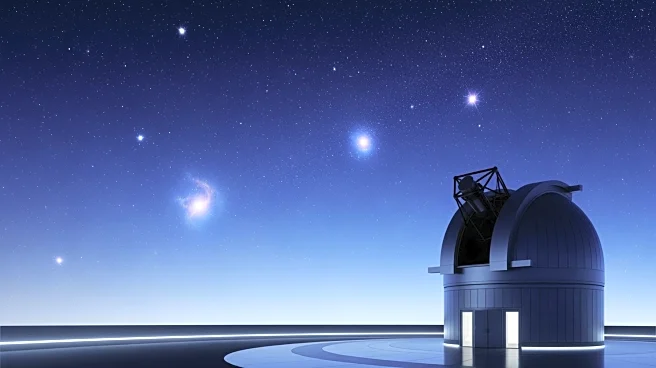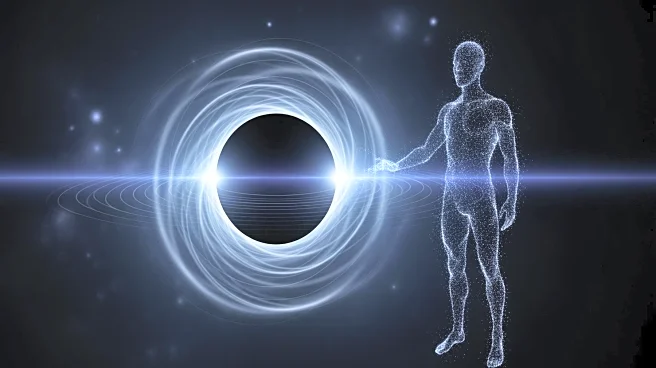What's Happening?
Astronomers using the James Webb Space Telescope (JWST) have potentially discovered the most distant supermassive black hole ever observed, located in the galaxy GHZ2. This discovery, made using JWST's Near Infrared Spectrograph and Mid-Infrared Instrument,
reveals a black hole existing just 350 million years after the Big Bang. The galaxy's spectrum shows intense emission lines, indicating high-energy processes likely driven by an active galactic nucleus (AGN). The research, not yet peer-reviewed, suggests that the black hole's rapid growth challenges existing models of black hole formation, raising questions about how such massive objects develop in the early universe.
Why It's Important?
The discovery of a supermassive black hole at such an early epoch provides critical insights into the formation and evolution of galaxies and black holes. Understanding how these massive objects grow so quickly can inform theories about the coevolution of black holes and their host galaxies. The findings may also impact models of galaxy formation and the role of AGNs in shaping the universe's structure. This research highlights the capabilities of the JWST in probing the distant universe and uncovering phenomena that challenge current scientific understanding.
What's Next?
Further observations using JWST and other telescopes are planned to confirm the presence of the AGN and refine models of GHZ2's behavior. Researchers aim to obtain higher-resolution spectra and additional data to better understand the contributions of stars and the AGN to the galaxy's light. These efforts will help clarify the processes driving the rapid growth of supermassive black holes and their impact on galaxy evolution.
Beyond the Headlines
The discovery of GHZ2's supermassive black hole opens new avenues for exploring the early universe and the mechanisms behind black hole formation. The intense emission lines observed challenge existing models and suggest the need for revised theories on galaxy and black hole coevolution. This research underscores the importance of advanced telescopes like JWST in expanding the boundaries of astrophysical knowledge and uncovering the universe's hidden secrets.


